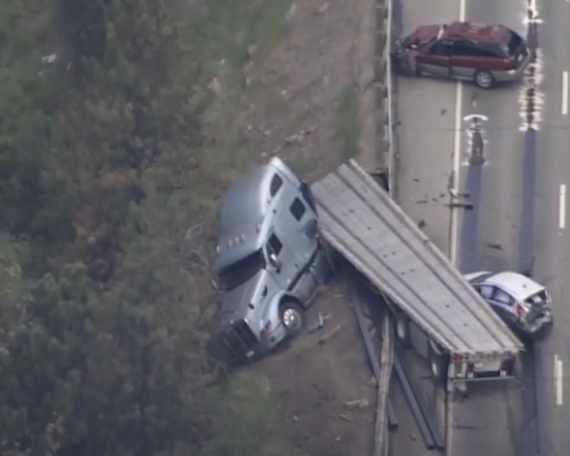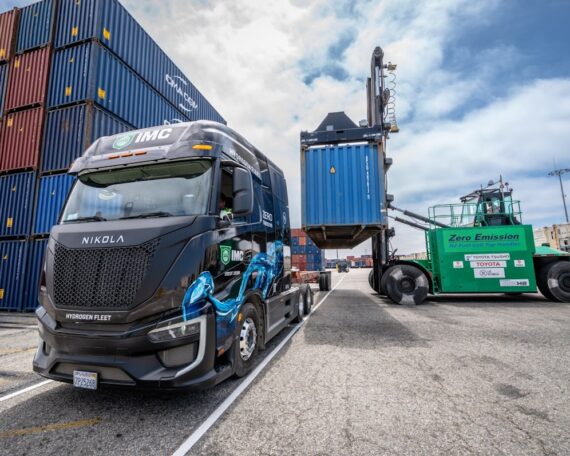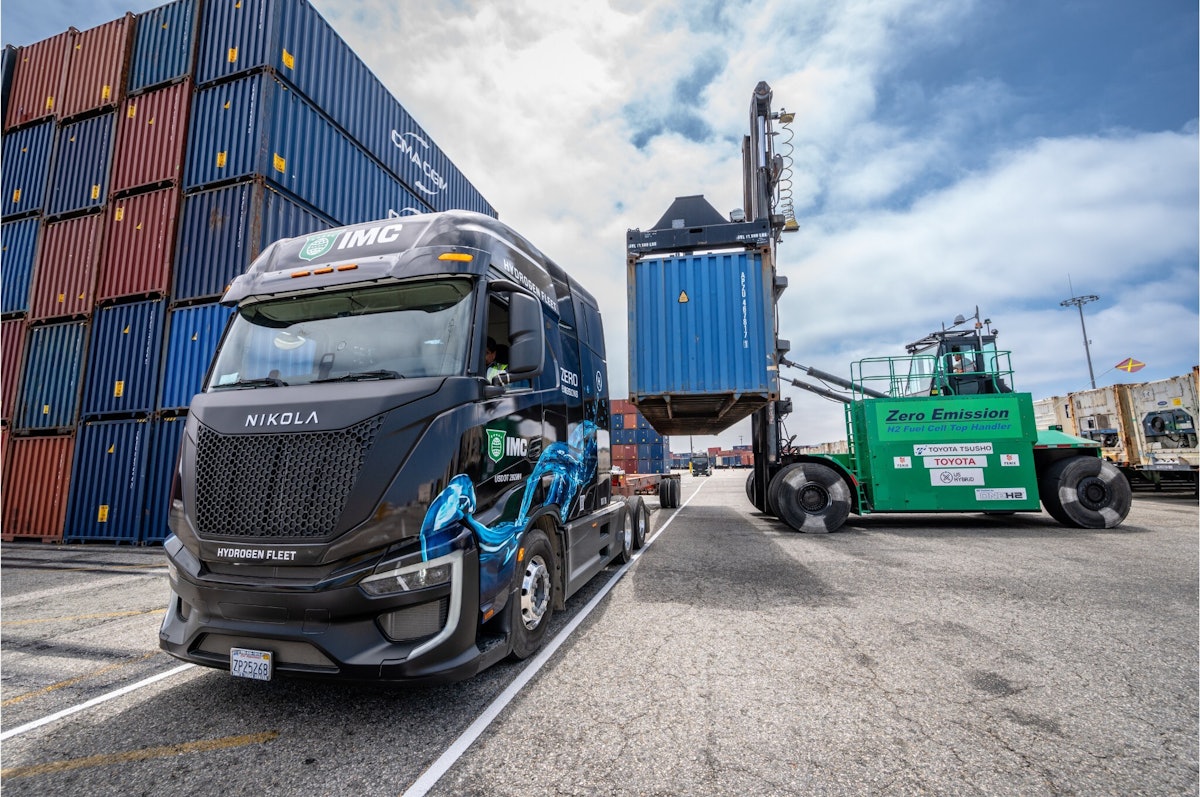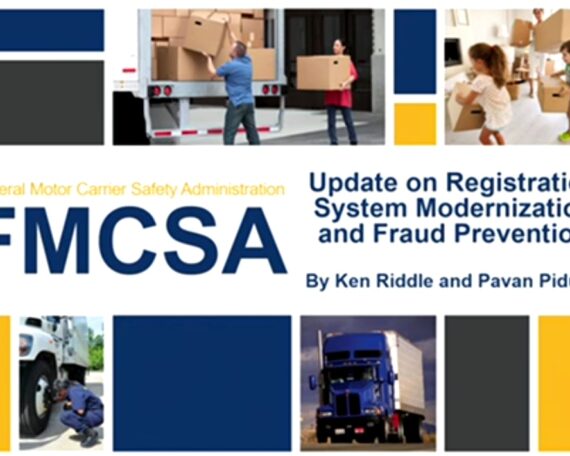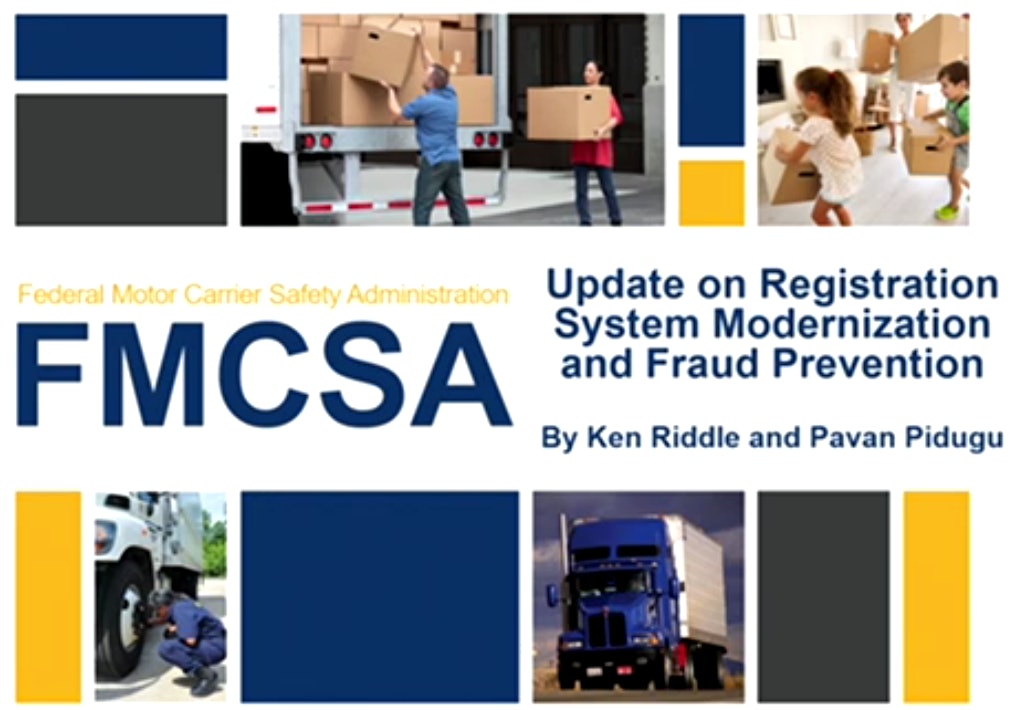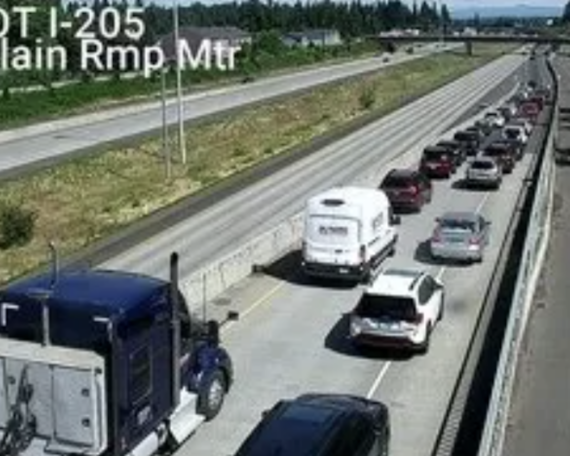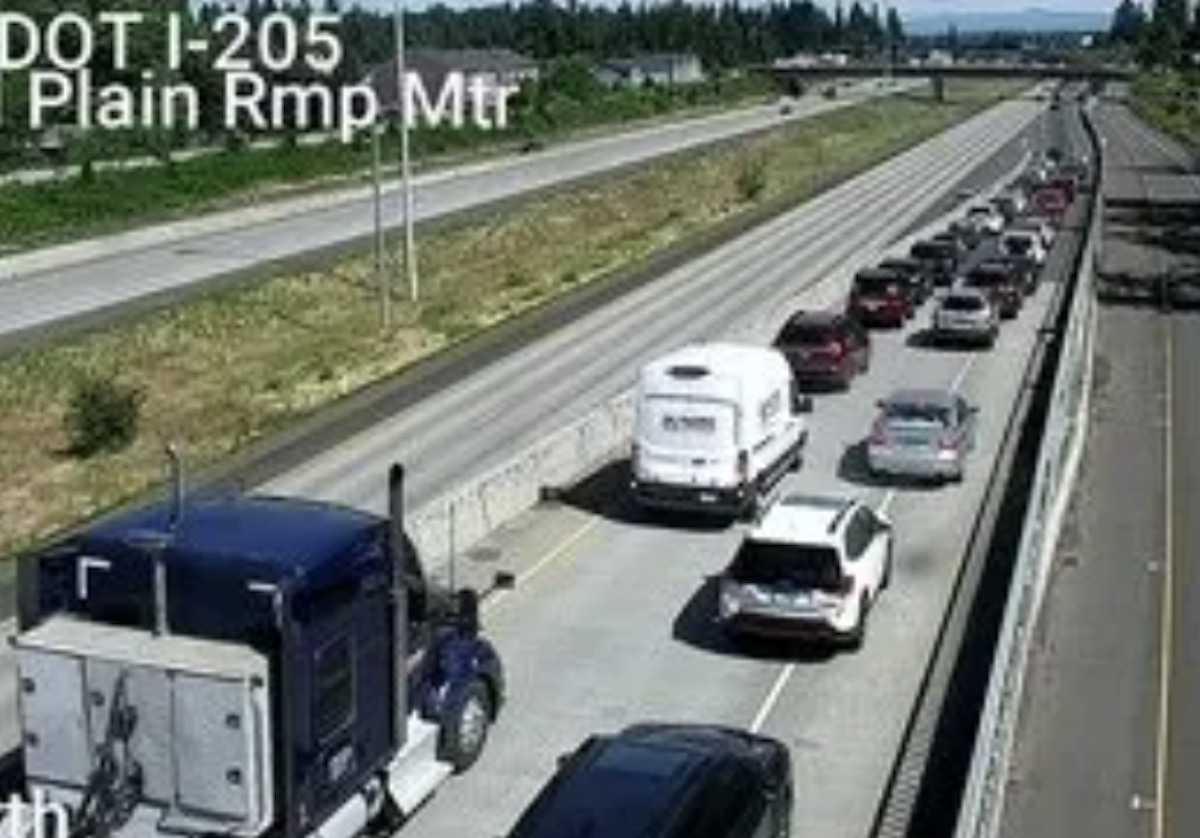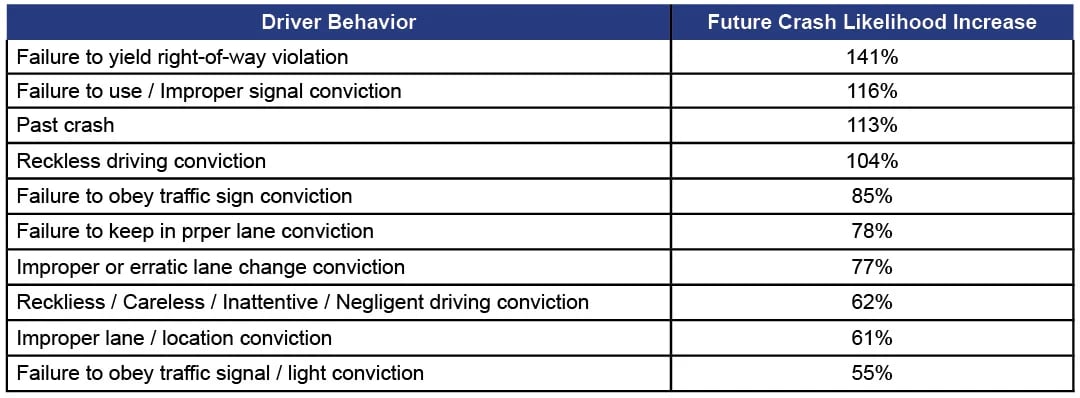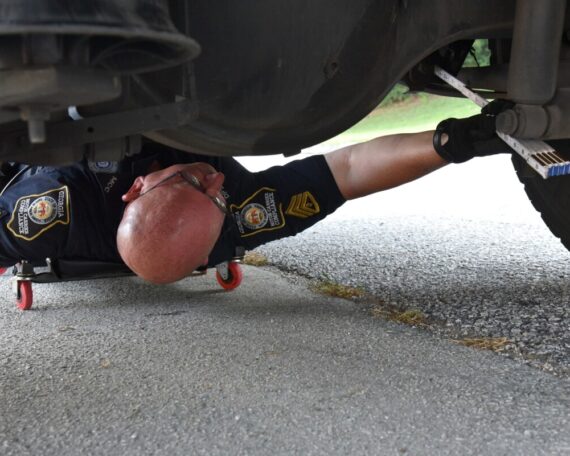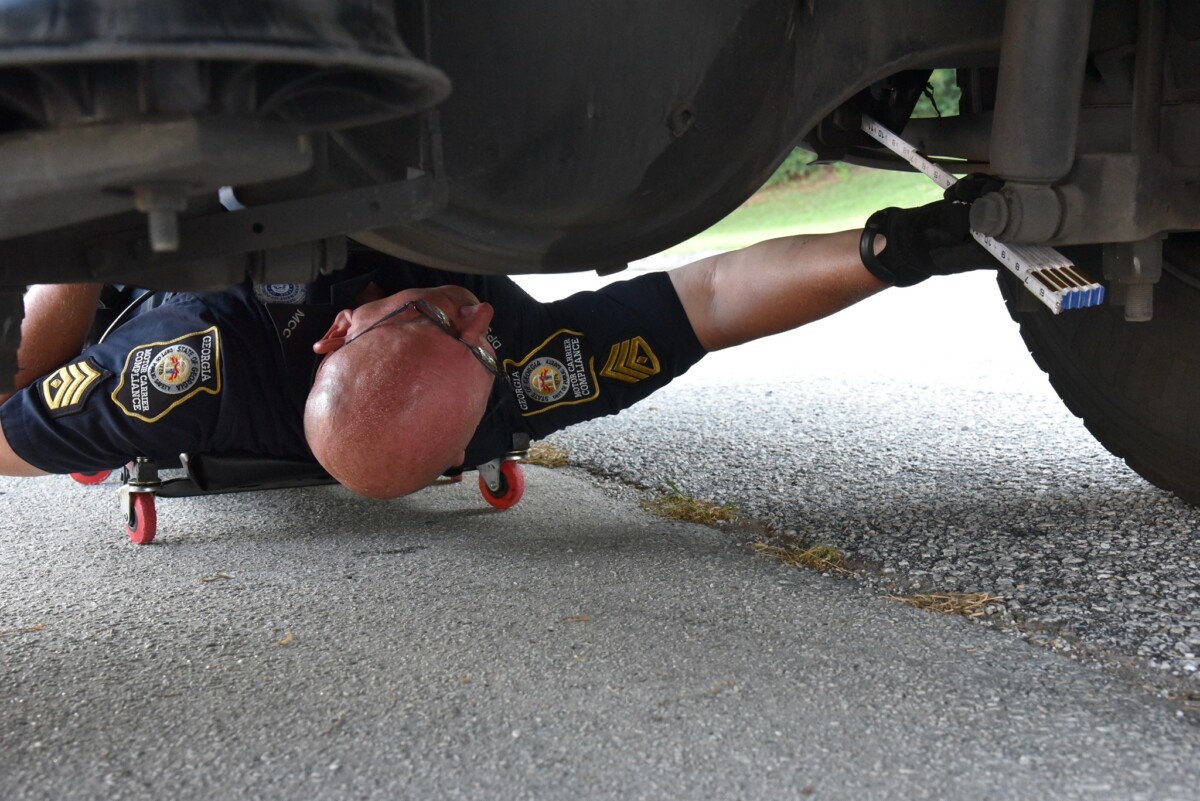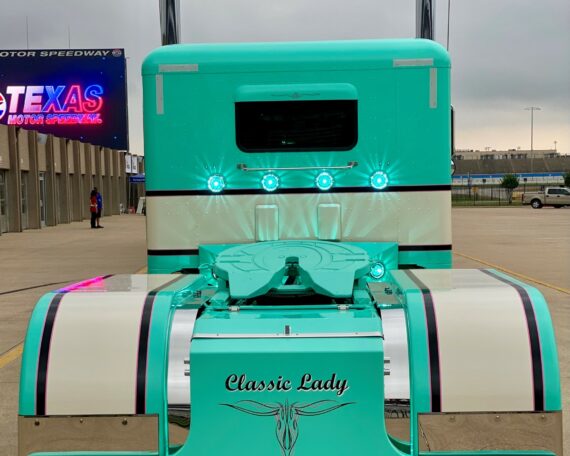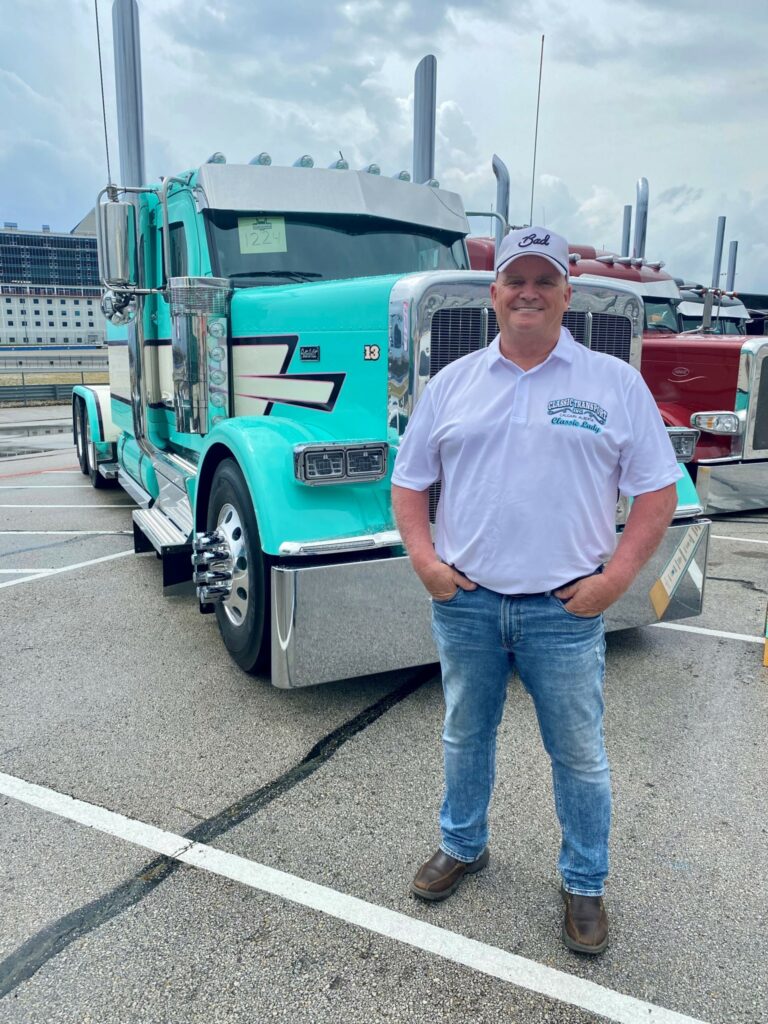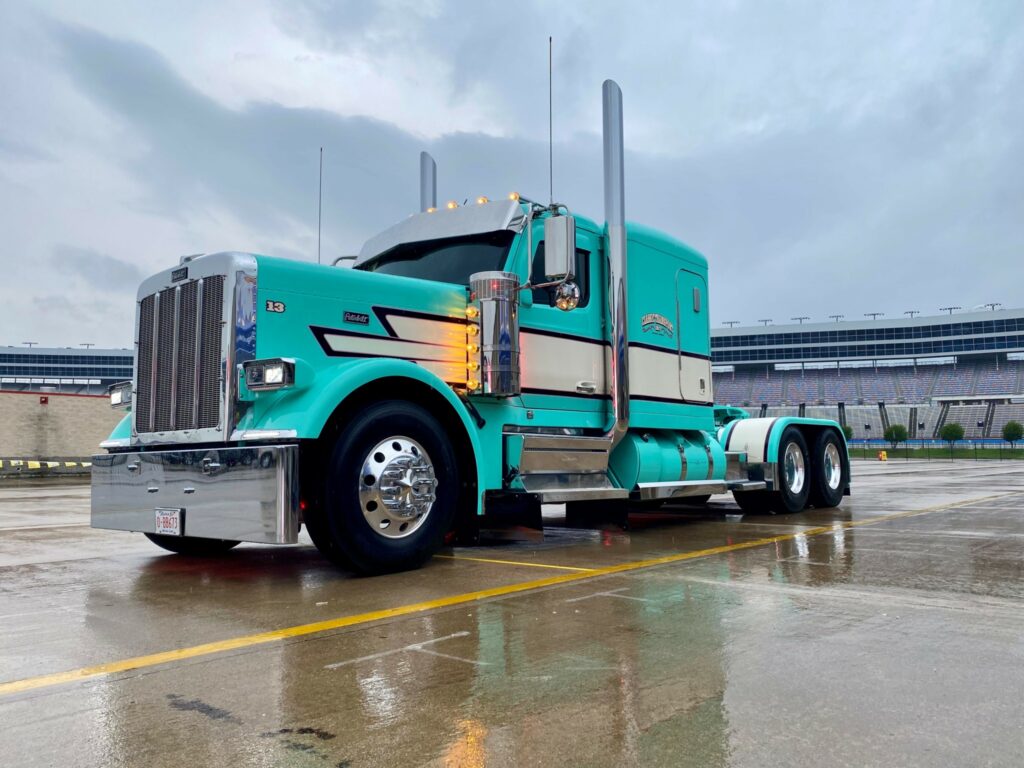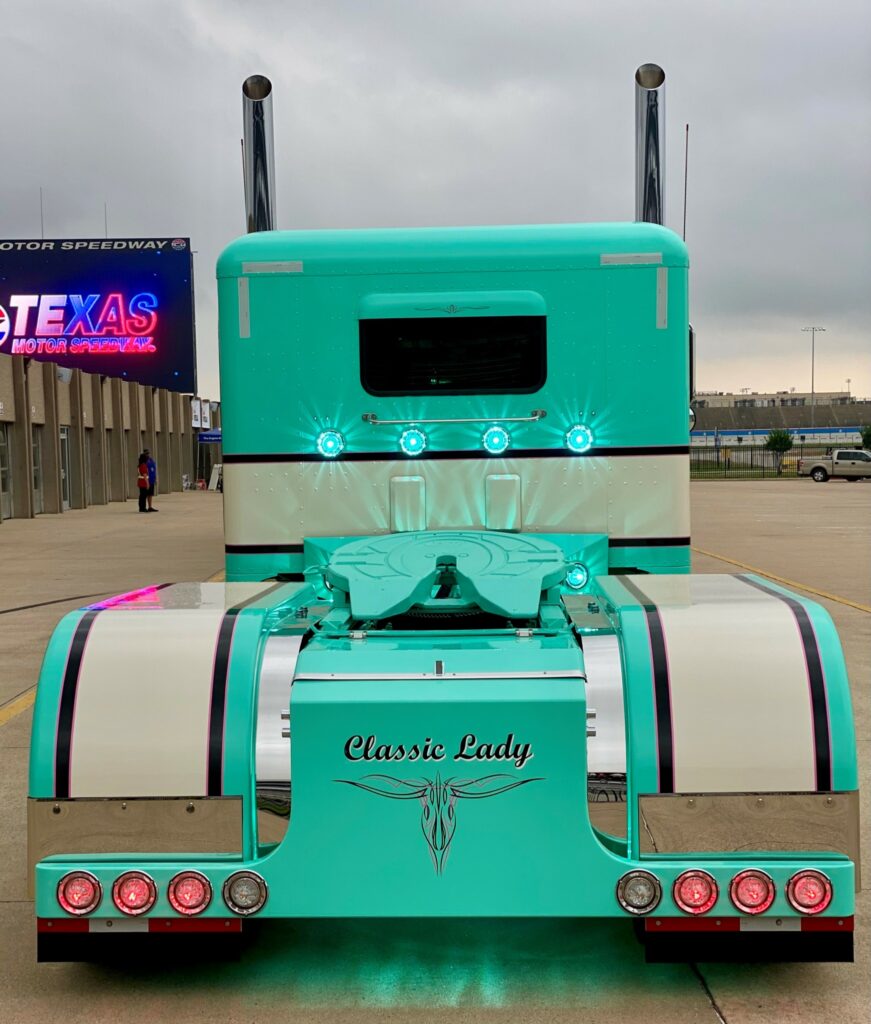The Federal Motor Carrier Safety Administration last week convened hundreds of industry stakeholders — motor carriers, association reps, third-party support companies and others — to detail and take questions about agency moves toward a brand-new registration system for applications for and management of authority. Much of what FMCSA’s registration office director Ken Riddle had to say about the agency’s plans was also covered in his talk at the Mid-America Trucking Show in March, yet he offered a more clear timeline for updates aimed in part at double-brokering and other widespread fraud problems.
[Related: The criminal element lurking in FMCSA’s registration system]
Some changes designed to prevent fraud have already been undertaken. Those include required use of login.gov to access FMCSA Portal accounts, U.S. mail-only PIN changes, driver’s license checks for paper authority applications, stronger verification of principal places of business, and more. Initial release of the first version of the new registration system in early 2025 will feature what Riddle called a “more user-friendly, self-explanatory and more intuitive” online authority application that guides users through the process, with so-called “smart logic and edit checks to help prevent mistakes.”
And with identity-verification protocols in place along the way. “Fraud is occurring in many different ways” around trucking, Riddle said. “Some reaches the criminal level, outside our realm, but some of it is within our realm. … Yes, it has something to do with the new registration system. But we’re not waiting” for the early-2025 expected release to take action.
As early as the fall, Riddle said existing business entities registered with FMCSA could expect identity checks to occur via a third-party verification service the agency will contract with, the nearer-term “clean-up” of registered entities in the system previously reported.
[Related: FMCSA’s carrier/broker-registration overhaul to ‘clean up the bad actors’]
The new system’s first release will incorporate as much as the agency can without a rulemaking, Riddle said, including standing up a new registration-fraud-dedicated team within the agency and more:
- The USDOT number will be the sole identifying number for all entities, eliminating the MC/docket numbers.
- The agency will implement a suffix to the number for the type of entity/authority, Riddle said.
- A new “safety registration” will be required for every motor carrier operating in interstate commerce.
- As noted, improved Principal Place of Business verification to “verify that the PPOB entered is legitimate and meets” regulatory requirements, Riddle noted.
Truckers can also expect a formal rulemaking later this year that, when completed and finalized, will enable a bevy of other updates.
- Elimination of paper applications in total.
- Insurance filings newly required for private hazmat and exempt-for-hire carriers.
- BOC3 process agent filings for private, private hazmat and exempt-for-hire carriers.
- Possible fee changes from the current $300 associated with the authority being applied for.
- A move to requiring annual rather than biennial (every two years) updates for all entities.
- Ending transfers of authority but for certain circumstances. “We’re working through that process now,” Riddle said, to determine just how much to limit transfers. “We’ll have to allow for corporate mergers and other mergers, but some of the transfers that are happening today will probably come to an end.”
- Elimination of Mexico- and non-North American (MX/NNA) docket numbers — to be replaced with a suffix on the USDOT number as with U.S.-domiciled carriers’ authorities.
Challenges to any registration lodged during the 10-day protest period before granting authority “will continue to be mailed to FMCSA and the registrant,” Riddle said, but after rulemaking the agency hopes to tighten up that system, too, with protests occurring within the online system. If no protests are lodged, “authority ought to go active at midnight on the 10th day,” among many improvements aimed at streamlining the registration process.
FMCSA CTO Pavan Pidugu called what the agency is working toward something of a “one-stop shop” for all industry interaction with the agency. No more separation between the FMCSA Portal, Licensing and Insurance, the Unified Registration System. “As we modernize, the need for the Portal will go away,” Pidugu said. “The new solution we’re designing will be the product that will serve as a one-stop shop solution for all carrier-related activities. L&I, Portal, URS – all will be in the new product that we are building.”
Interaction with the agency, assuming the work is well-done, ought to simplify considerably for carriers, yet near-term there could be a problem for some — and the agency itself.
[Related: FMCSA to end MC numbers, overhaul registration system to stamp out fraud]
A sole-proprietor problem for business-ID verification
Might FMCSA’s plan to use at least partially if not wholly automated systems to attempt identity verification of every business entity registered in its system later this year overlook untold thousands of sole proprietors?
In the virtual session, new emphasis was placed on the question, raised also in the aftermath of the agency’s MATS session in March. Particularly, Riddle noted FMCSA wanted to hear from sole proprietor owner-operators and other registering businesses about how the agency might design the system to verify their businesses. Regarding the third party it’s planning to contract with to clean up the current population of entities in the system, FMCSA hopes it can automate as much of the verification as possible for swift results, accessing other public databases and systems to “verify the business being registered actually exists.”
Such verification will be a big part of the new system, ultimately, to bolster security and prevent bad actors from exploiting loopholes to infiltrate it. Connections to other government entities will help — the “U.S. Postal Service to verify PPOBs, PHMSA to verify hazmat details,” FDIC, state insurance commissions’ systems, CDLIS and others, Riddle said. Connections in the new system can serve, he hoped, to “validate data in real time” within. Yet keep in mind, as noted above, that meantime the agency is prioritizing business verification for entities in its existing system, prior to updates going live early next year.
The agency will begin a “cleanup” of entities registered in its system with those identity verification tools.
For business ID verification, plans to cross-check registered carriers/brokers/forwarders against state and/or other federal business registrations, Riddle acknowledged, could present problems for some sole proprietors. “We would like to learn more about that,” Riddle said, referencing assumptions about state requirements for business entities to register.
Few states actually require sole proprietors that aren’t creating LLCs or filing as S Corps to register, noted Joe Rajkovacz, government affairs director for the Western States Trucking Association. He’s helped handle authority applications for members and others in most states around the nation, with some exceptions primarily in the Northeast. Among states, Nevada, he said, was the only he knew of that statutorily required sole proprietorships to register with the state as a business.
Some states like California, he added, do require sole proprietors to register their doing-business-as entity names, however, which could provide a pathway for state-systems verification for FMCSA’s business-ID checks. At once, other states don’t require any kind of business registration at all. Rajkovacz pointed to Wisconsin as an example, where he long operated as a sole proprietor owner-operator dba Rajkovacz Trucking. “I still have Rajkovacz Trucking” to this day, he said, “and I’ve never had to register it.”
[Related: New bill would let FMCSA fine double brokers $10,000, crack down on shady actors]
More than one commenter in the chat that accompanied FMCSA’s virtual session last week pointed to federal business registration, of a fashion, in the Internal Revenue Service’s Employer Identification Number. Most owner-operators and small fleets in Overdrive‘s audience will have an EIN, given it’s required of any entity paying Heavy Highway Vehicle Use Tax (HHVUT) via Form 2290.
Yet that hardly covers all trucking businesses, given those operating under 55,000-lb. gross weights aren’t required to pay it — sole proprietors there thus are unlikely to have an EIN. Since the COVID-19 pandemic in particular, a big part of the growth in businesses with authority in trucking “has been on the low end” of the gross-weight continuum, Rajkovacz noted, whether in the form of hotshot haulers in Class 3-5 trucks or local/regional box truck operators with lower weights.
Since Overdrive‘s prior reporting on the potential issue there, it’s at least clear it’s now on Riddle and FMCSA’s radar. Riddle encouraged comments on ways to verify sole proprietor businesses, whether via the open registration-system-update comment period (through June 18) reported here or via a direct email address he provided as a way to contribute to the discussion last week and ongoing: [email protected].
The agency plans to hold a third registration-related virtual session prior to business and personal ID checks coming into play to field further questions from trucking stakeholders about the updates and issues, Riddle emphasized, “date, time and details TBD.”
[Related: FMCSA moves on registration-system update]
Read More

